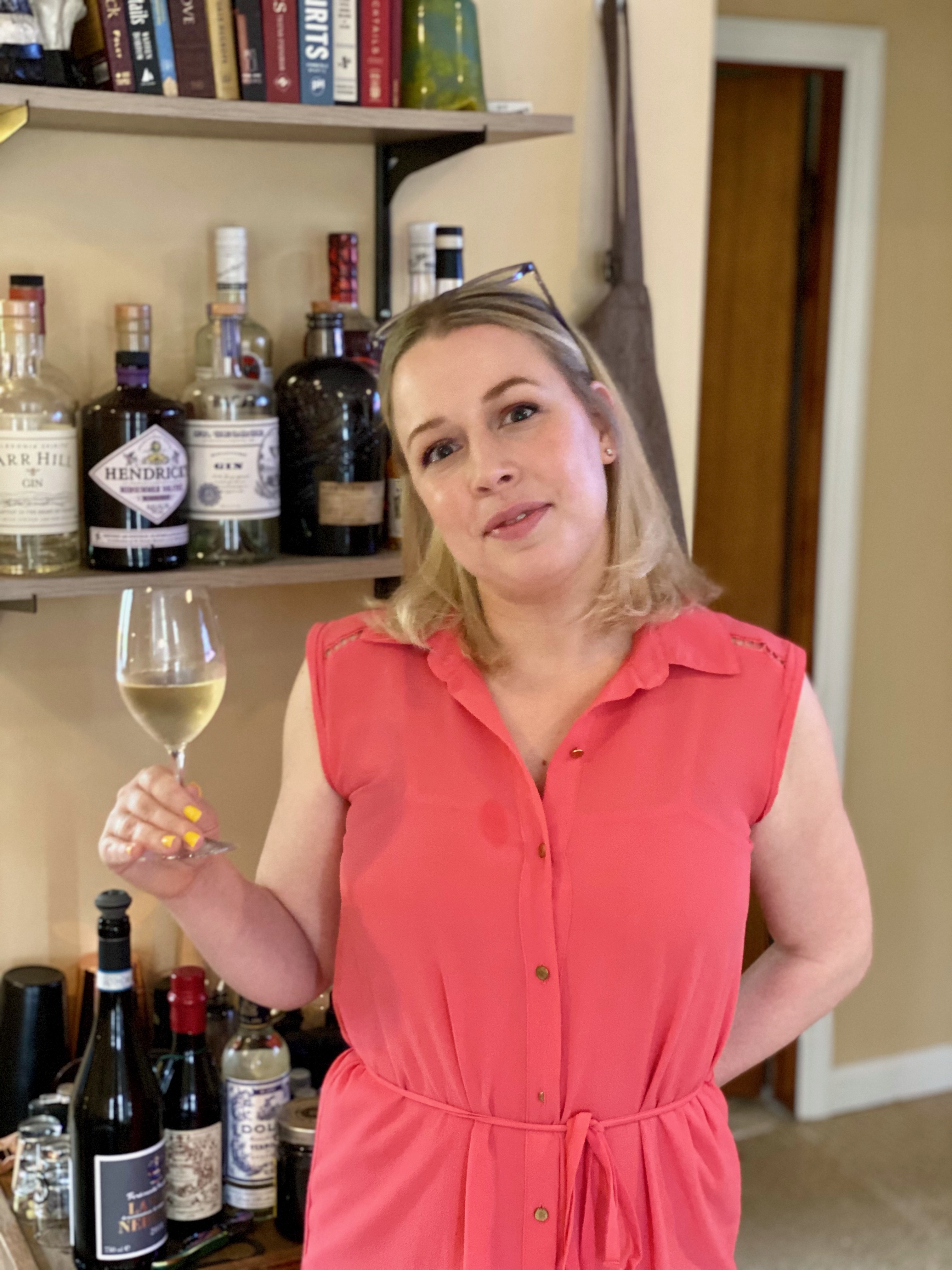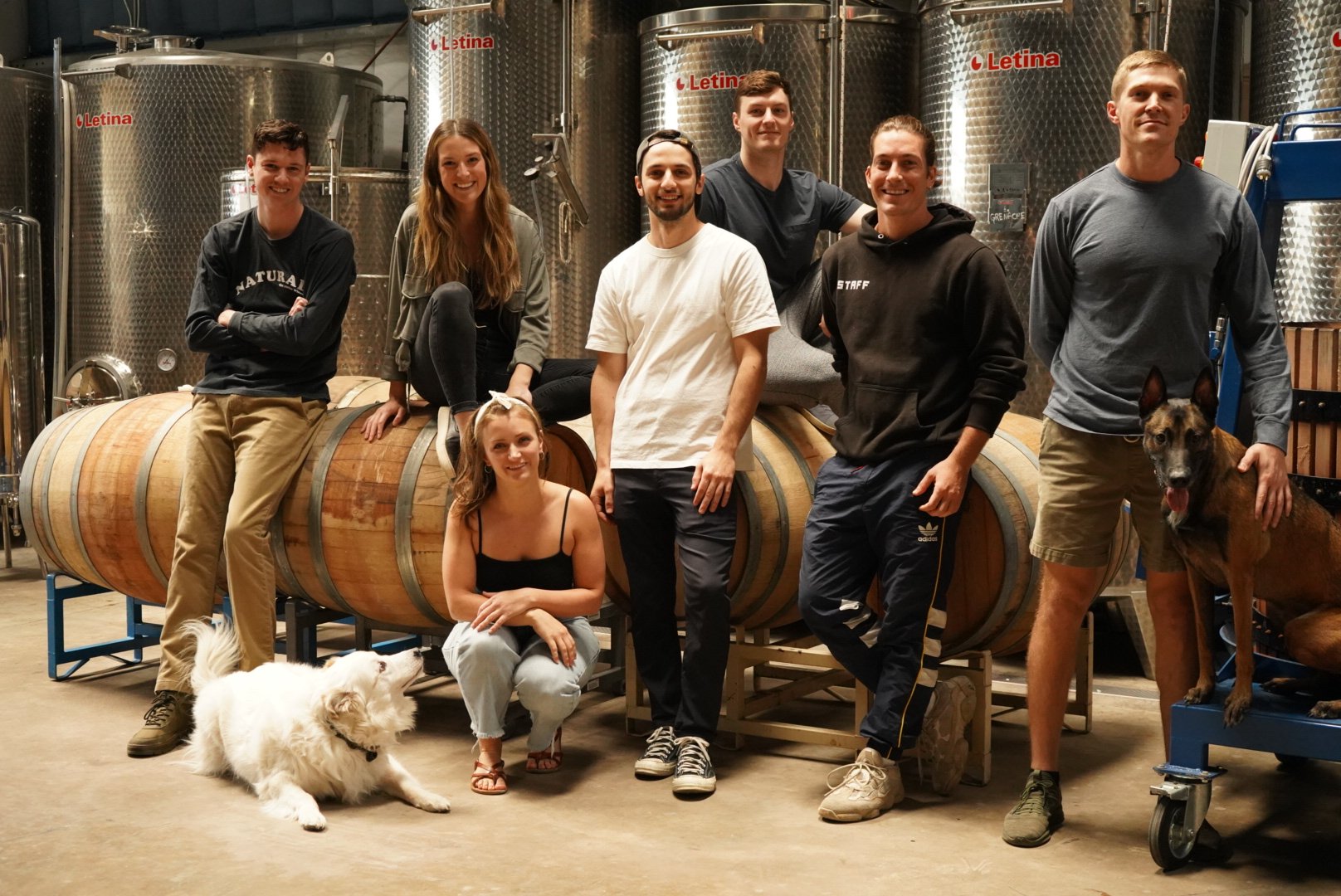
The fellas at Austin Winery are anything but traditional winemakers. Cooper Anderson and Ross McLauchlan are navigating the wine world by following their own north star, as neither come to winemaking natively. It’s a path chosen rather than given, self taught, these gentlemen have encompassed in ten years what takes some wineries generations to obtain. Mastering first ‘conventional’ winemaking, then rolling the dice and taking a chance on a more natural, terroir driven approach. As proof by their wine portfolio, they are creating fun and interesting wines by interpreting others' winemaking styles in their own way and giving them a proper Texas twist by sourcing all their organic fruit within state lines.
They’re on their way to prestige and taking their tribe with them along the way, emboldening their team to try their own hands at creating the good juice under the Austin Winery Umbrella, with a ‘what is good for them, is good for us’ philosophy and even displaying their friend’s artwork on their own creations to be seen by the masses.
I got a chance to sit down with Ross to ask him a few questions about his unusual endeavors.
Brittney Abell: What put you guys on the path of winemaking? There is no traditional vineyard and you're located in Austin. What was the inspiration behind the urban winery?
 Ross McLauchlan: Well, so you're a hundred percent correct that neither Cooper nor myself were born into winemaking or viniculture. We came to this profession by way of passion and somewhat like coincidental circumstances as well. He and I both are soccer players and we actually met playing soccer. We both sort of have this philosophy that a soccer ball and bottle of wine can kind of be your passport to the world. There's things that are really supposed to be really democratic in terms of accessibility, universality, and something that should be bringing us together. Clearly sports and alcohol can be divisive as well. But in a overgeneralization, I think that they are two things that are really wonderful and accessible in our lives that have helped bring us exposure and appreciation for things we might not have gotten to experience without them. So they're wonderful vehicles for that, in that regard.
Ross McLauchlan: Well, so you're a hundred percent correct that neither Cooper nor myself were born into winemaking or viniculture. We came to this profession by way of passion and somewhat like coincidental circumstances as well. He and I both are soccer players and we actually met playing soccer. We both sort of have this philosophy that a soccer ball and bottle of wine can kind of be your passport to the world. There's things that are really supposed to be really democratic in terms of accessibility, universality, and something that should be bringing us together. Clearly sports and alcohol can be divisive as well. But in a overgeneralization, I think that they are two things that are really wonderful and accessible in our lives that have helped bring us exposure and appreciation for things we might not have gotten to experience without them. So they're wonderful vehicles for that, in that regard.
And then in a more sort of real perspective, he and I, like I said, met playing soccer. I had just come back from studying abroad in Barcelona. Cooper started working at some of the Hill Country wineries and this was back in 2010. I got him some friends at a soccer team and he ended up getting me a job out in the Hill Country, too. We were working in the tasting room and cellar at some of those wineries and then kind of went into different areas of the industry. Before you knew it, we felt like we had good exposure, really good mentorship, and started making wines in a negotiant method on our own and felt like we really had a knack for it and saw a big gap in the market in Austin. That was like sort of the impetus for us to jump.
How has your winemaking philosophy evolved and grown over time?
It has done so hugely. Firstly, we are a team of mostly self-taught winemakers, while we've taken extension courses through Washington State, we didn't go to a four year university with an undergrad or graduate degree in oenology or viticulture or wine-grape chemistry. So with us being more self taught, we really took the textbooks quite literally. I think we were doing what you call "conventional" winemaking when we first started, inoculating yeast, filtering, fining, all those kinds of things that you learn kind of out of the book. I think once we had success and stability doing that, showing that we could do things grammatically correctly, we felt sort of like we had the license to deviate from that. We kind of gained exposure to much more native yeast fermentation, things that are unfined and unfiltered, petty on naturals (pétillant naturel), Beaujolais styles. We took one year where we made maybe half of our wines that way and then immediately just went full on native yeast, low intervention and not adjusting tannin or acid. We felt like it was just much more terroir driven wines. It felt like it was also embracing some of the realities, positive and negative, of winemaking in Texas and allowed us to sort of show our skill and flexibility of our palate and our decision-making to make balanced wines without adjusting acid or tannin.
A great example of that is several wines that we've been doing now are ripasso method. So that's basically taking skins from the latest harvest and adding them to what would otherwise be finished wines and those wines, not that they were flawed, but maybe a little bit of dissolved oxygen or had lost some of the acidity or that fruit forwardness on the palate. One way to replenish that is by adding fresh skins to it. We have found these natural techniques, whether it be through blending or ripasso or saignee to make these grapes the best version of themselves, but to keep them fully reflective of the varietal, of the sense of place and time. I think that's really like, I don't have kids, but I would never want my kids to be like ornamentation. I want them to be like whoever they want to be, and I'm just going to help guide them on that path, right?
What's the biggest challenge to growing grapes in the region? Is there ever an issue with supply?
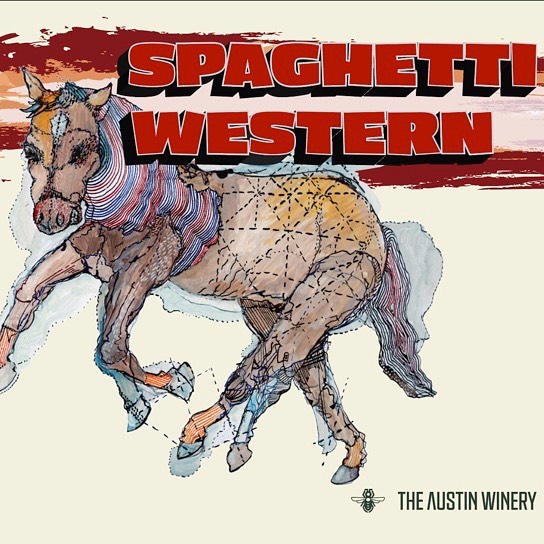 With supply? That actually, that probably is our biggest issue in terms of quality supply and supply, in general. There's two predominant growing regions in Texas, the Hill Country and the High Plains. They're about six hours apart from one another. The Hill Country, which is about 20 minutes from us, experiences much more rainfall. We're really not much more than 500 feet above sea level here, there is some humidity as well. With that, there's more disease pressure here and not quite as much as a diurnal shift of high, high temperatures and cool nights. The major risk there is sort of bold and you do get some late freezes, too. While we don't do any herbicides, insecticides, we will spray copper before bud break to mitigate that.
With supply? That actually, that probably is our biggest issue in terms of quality supply and supply, in general. There's two predominant growing regions in Texas, the Hill Country and the High Plains. They're about six hours apart from one another. The Hill Country, which is about 20 minutes from us, experiences much more rainfall. We're really not much more than 500 feet above sea level here, there is some humidity as well. With that, there's more disease pressure here and not quite as much as a diurnal shift of high, high temperatures and cool nights. The major risk there is sort of bold and you do get some late freezes, too. While we don't do any herbicides, insecticides, we will spray copper before bud break to mitigate that.
Then in the High Plains, much nicer diurnal shift, but with that comes hail because you have this confluence of high and low pressure and these three distinct climates converging in the High Plains, the Chihuahuan Desert and the Chisos Mountains. Everything hits and you can get really big hail. When you have fruit on the vine, that can be dangerous too, and some wind, but those are probably the two biggest environmental kinds of things to tackle there. But also, Texas is a big state.
There's a lot of thirsty people here and there's tons of wineries now, much more so than planted acreage. We have to work really hard to develop our relationships, to put our hard work into the vineyard as well, to sort of help put us in the best position. Another thing with that I think is really important is that there is another reason why we label with the vineyard designate on the bottle because we really want to pay respect and credence to the initial site of each of the grapes. If we're going to help increase the IQ of all of our customer base, they need to know these regions and the vineyards and it's also part of the winemaking process.
Absolutely. And I'm so happy that you brought that up because I was just going to ask what are the different types of terroir from these two different regions that you were talking about.
We have a lot of limestone soil here in central Texas. There's about three inches of clay before you hit this limestone. That clay retains water really, really strongly. But once it filters down through that pad, if you've got good deep roots for your vines that they're going to be deeper into limestone, which will experience some water filtration, give you some minerality. Much less likelihood of wet feet as well once you get past that table. I think generally speaking, some of the reds in the Hill Country could be a little more supple.
Sometimes the High Plains, because you get that good diurnal shift and a little bit more time on the vine, you see a little more fullness of ripening. We tend to be picking a little bit earlier in the Hill Country because of everything, but really one of the major things is late rainfall. We really don't want to have rain within a few days before we harvest, because we're getting watery graves and just not great concentration of flavor. You'll see a little bit of difference in the ripeness of those two, but also I think the whites from the High Plains tend to be a little more sun-kissed, higher acid, really like you get a lot of nice tropical fruit flavors from that. I think the wind sort of helps keep things really fresh there as well.
Because you do source out these fruits, you have some really interesting wines. Do you kind of come up with the concept for these wines by what you can source or do you come up with these concepts and then try to source the materials you need to create them?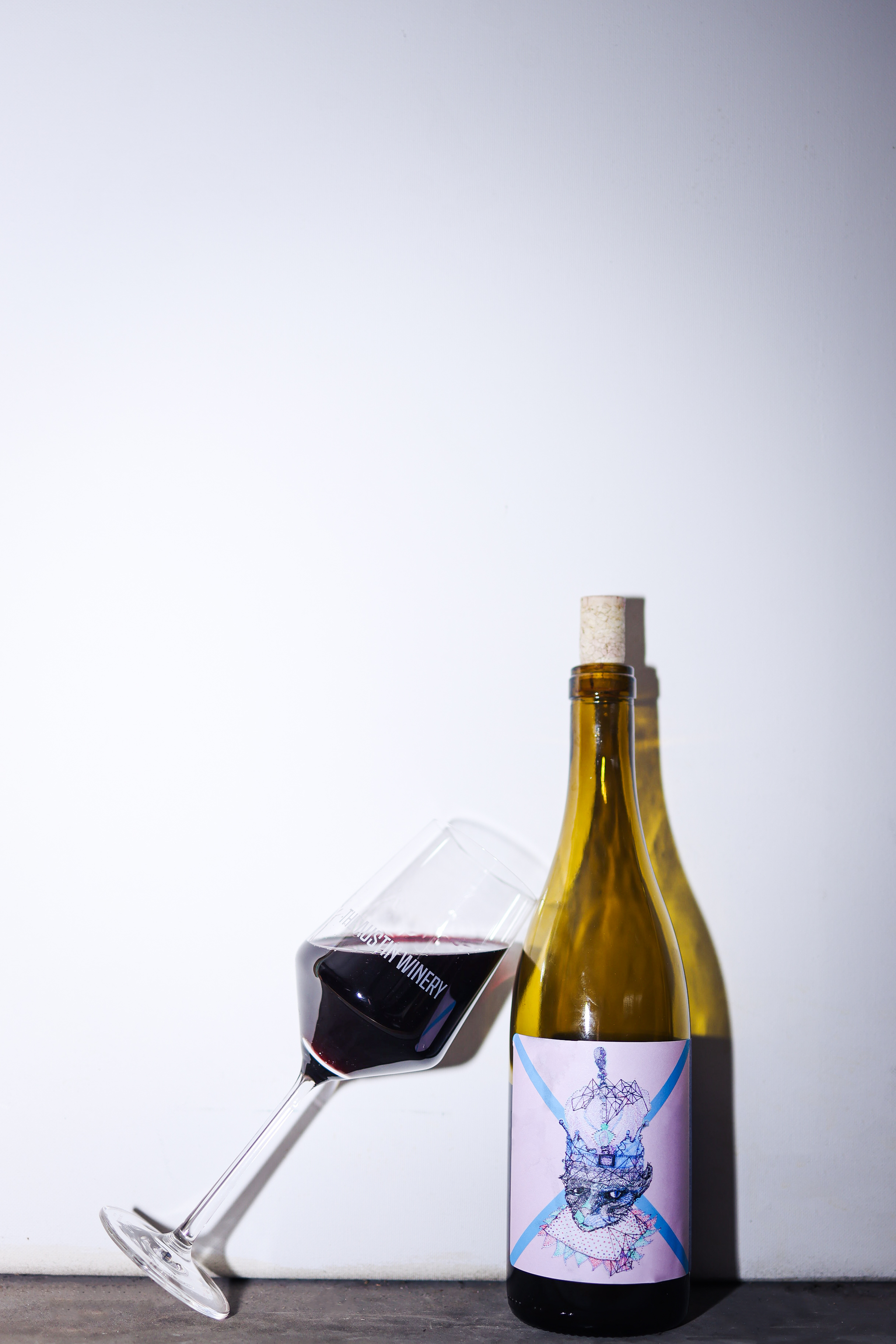
Well, so I'll give you another analogy again. If you're writing an album, right? (which I've never done). Analogies to things I've never done before, but I think you start with something that you're really passionate about at the moment. Something that's really driving you, that you're like, "This is going to be our starting point, right?" So for us, the violet crown, which is a medium plus bodied Tempranillo that's balanced fruit, acidity and tannin, but really, really smooth body, that was sort of our first wine. Then you go from there you say, "Okay, well we want a crisp, clean white. We want a lighter, easier drinking red. We want a rosé. We want a malolactic fermentation white wine that's softer and more supple." And you go about it that way. You identify what you're missing in your portfolio in terms of an expression or something that you're really interested in making. Then you'd go try and identify candidates that are good for that.
There's other times where something will just appear, right? Where somebody has decommitted from a hold of grapes for instance. Or sometimes some things will come up for auction, like Robert Clay Vineyard is the only certified, organically farmed vineyard in the state. They decided that they didn't want to continue their relationship with a winery here and put the vineyard a couple of rows up for auction. It was really expensive, but it was totally worth it. That's why we have like Touriga in a giant sandstone amphora right now that I'm really excited about. Touriga rosé and then a hyper-extracted one too.
I saw a little bit about the "collective" on your site. Can you tell me a little bit more about that?
It's really been a wonderful aspect of our business that's grown among itself. Initially, when we put the winery in the urban marketplace, a big focus for us was accessibility to wine in terms of understanding wine, seeing it in a tangible sense. I think it's just like textbooks can't really show you the whole picture. What we want people to see is just how much it takes, how blue collar winemaking really is. I think that sort of hard work and endeavor will make people engage with that much more.
But beyond that, what we found is really, we weren't just bringing exposure to wine to the city, but exposure and access to winemaking. Nobody on our team came from provenance of winemaking either. All of our staff who are on the winemaking team have their own sub-brand underneath the bond of the winery. It's basically an idea for them to be able to have their individual expression, as well as their part of the team as a whole. But I think it's really important for people to continue to develop themselves professionally and personally.
When people are playing at work, after work, that's when you're going to get some of the best ideas. For instance, Adrian took a big interest in amphorae and she made an investment that for us, when we were trying to scale up immediately we're like, "Oh, amphorae probably isn't a really efficient way to produce as much wine as we want." But if you look behind this, you'll see three amphorae there, two more big sandstone ones in the winery. She started with one and then we were like, "Wow, this really is a wonderful, wonderful vessel." It has become something really central to the Austin winery brand, as well. So not only does it help them, but it helps the whole brand, too.
Very cool. I think that it's really awesome that you give your team an opportunity to shine.
Yes and to all of our benefit.
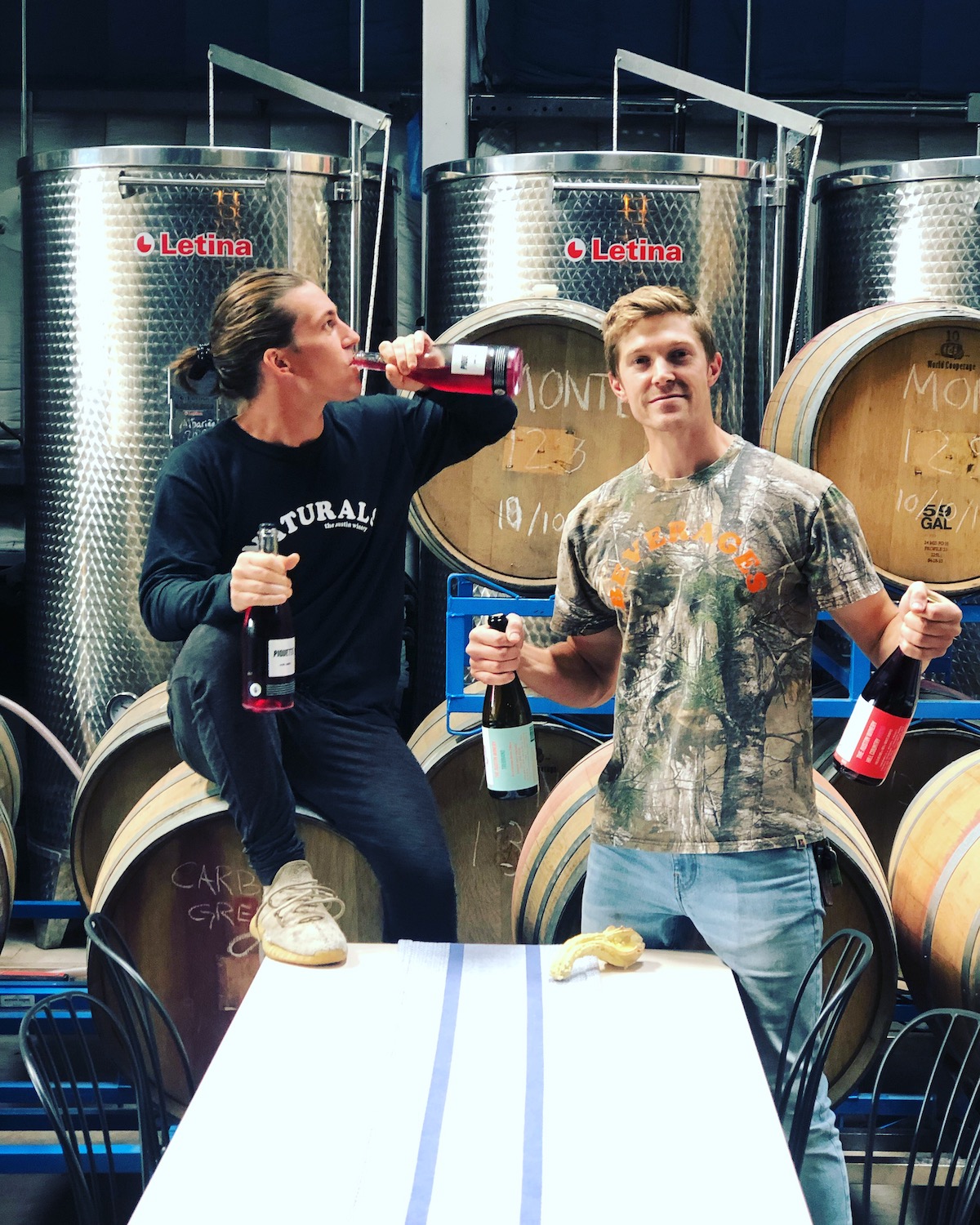 Your label art is very interesting, you have a single artist doing them?
Your label art is very interesting, you have a single artist doing them?
Correct. We have a single artist, his name's Nick Mathis. He does all of the hand ink illustrations. And then in-house, Travis also does all the graphic design. They're very clear and distinctly different. Whether it be for the cans or a couple of labels that are just graphic design. But otherwise, any piece of art on there is from our friend, Nick, who some of those are direct commissions, some of those are things we're like, "We love that, can we use it?" And it's always a really fun, like exercise asking your friend to draw for you and drinking. That's like the funnest part of the winemaking process really.
Yes. And it includes his talent in what you do and lets somebody else shine.
Yes. Exactly. And the labels should be evocative, right? They should sort of have some connotation to a sentiment, to how the wine was made or the setting that you see it drawn in or something. Some connotation to it. I sort of like anthropomorphic stuff, like The Wind in the Willows is, I find to be very relatable.
Last question. What is your desert island wine? You can pick any wine in the world.
I probably would... well, I'm probably getting some fresh fruit while I'm on that desert, just a little bit of seafood. I would probably go for like a cool, Chateauneuf du Pape, but for the weather over there, I would probably go for something that's Mediterranean, like a Sardinian or Corsican wine. They have a lot of salinity to it, light body, long finish. I think something that was aged in stone, buried in the ground or underwater, that sounds good.
